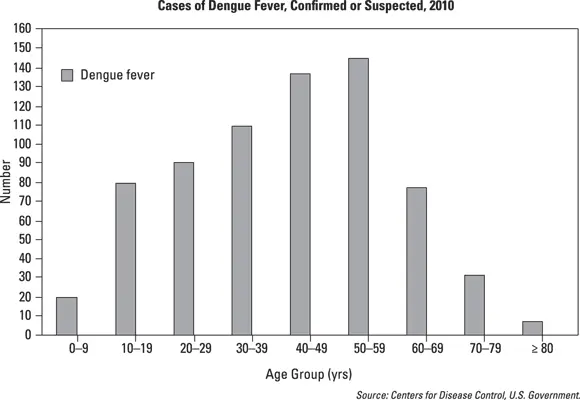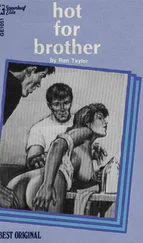1 Always read the blurb at the beginning.As with any other Reading passage, start with that blurb.
2 Answer the questions that deal solely with Passage 1.These are always the first three or four questions. Use the same approach as you would with any other passage: Start with the line-number questions, then work the detail questions, and then read the passage and answer the inference and main idea questions.
3 Answer the questions that deal solely with Passage 2.Rinse and repeat. The Passage 2 questions are always grouped after the Passage 1 questions.
4 Answer the questions that ask about how the passages fit together.The fit-together questions are always the last of the bunch. Keep an eye out for these common themes:How would the authors of both passages agree or disagree?Does one passage give an example of the point made in the other passage?What would the author of one passage say about something in the other passage?
You can try your hand at the two-part passages in the next chapter and in the practice tests that accompany this book, but for now, try out these questions on this brief history passage taken from To and Through Nebraska, by Frances I. Sims Fulton, describing settlers traveling to the West during the 19th century:
During all this time, and despite the disagreeable weather, emigrants from the cities of the Northeast to the wilderness in the West keep up the line of march, traveling in their “prairie schooners,” as the great hoop-covered wagon is called, into which, often are packed their every worldly possession, and have room to pile in a large family on top. Sometimes a sheet-iron stove is carried along at the rear of the wagon, which, when needed, they set up inside and put the pipe through a hole in the covering. Those who do not have this convenience carry wood with them and build a fire on the ground to cook by; cooking utensils are generally packed in a box at the side or front. The coverings of the wagons are of all shades and materials. When oil cloth is not used, they are often patched over the top with their oil-cloth table covers, saving them from the rain.
 The details about the wagon serve to
The details about the wagon serve to
Cover the answers. In your own words, why does the author describe the covered wagons in so much detail? Probably to give an example of how the travelers are resourceful and clever. Now cross off wrong answers:
(A) reveal the convenience of covered wagons
(B) emphasize the ingenuity of the travelers
(C) show that the travelers were ill-equipped for life on the frontier
(D) contrast life in the city with life in the wilderness
Did you cross off Choices (A), (C), and (D), leaving Choice (B) as the only possible answer? Here’s the rationale. According to the passage, the travelers pack everything they need into one wagon. Some have more than others, but those who, for example, lack stoves “carry wood with them and build a fire on the ground” (Line 7). They protect themselves from the rain with either a wagon cover or a tablecloth.
 Which of the following best fits the theme of this passage?
Which of the following best fits the theme of this passage?
Cover the answers. In your own words, what’s the passage mainly about? Maybe something like, “Traveling and camping in a covered wagon.” Perfect. Now cross off those wrong answers:
(A) Cooking on the frontier
(B) Chasing the gold rush
(C) Traveling in a prairie schooner
(D) Economics of the Old West
Cross off Choice (A), because even though cooking is part of it, it’s not the main idea. Cross off Choice (B) which, though it may be true, isn’t specific enough, and more importantly, doesn’t match your answer. Choice (C) gets a dot: Remember “prairie schooner” is what they called the covered wagons. Cross off Choice (D), which isn’t even mentioned in the passage. Choice (C) is left, so that’s what you go with.
That takes us back. Anyway, the science passages don’t rely on your knowledge of the topic: Everything you need to know is in the passage. You are expected to know the basics — for example, the Earth orbits the Sun, water boils when it’s hot, cells divide — but there’s no need to study any science topics to prepare for these passages. Instead, practice the strategies.
These passages cover such science topics as biology, chemistry, environmental science, physics, experiments, and various phenomena. Try this approach to a science passage:
Search out the facts. Whether describing an experiment, survey, or observation, some information is in the text and some in the graphic element, if the passage is illustrated. Pay attention to numbers, including percentages, populations, and rates of growth or change.
Don’t worry about technical terms, but do know general science vocabulary. If you see a strange word, the definition is probably tucked into the sentence. You won’t encounter a question based on the definition of Tephritidae unless the passage explains what Tephritidae is. (It’s a type of fruit fly.) Look for these definitions as you read. You should, however, know general terms that pop up frequently in science-related material, such as control group (a group that doesn’t participate in an experiment and serves as a point of comparison) and catalyst (a substance that causes or increases the rate of a chemical process). As you work through practice exams, jot down these definitions from the answer explanations, because you may see them again on exam day.
Identify the argument. Some SAT science passages present a dispute between two viewpoints. The SAT questions may zero in on the evidence for each scientific theory or hypothesis, and then quiz you about each author’s stance.
Notice the examples. The SAT science passages tend to offer examples both in the text and in the graphics. The questions may ask what the examples prove.
The SAT includes graphic elements in most science and occasional social studies passages. Be sure to follow these guidelines:
Look at everything. The title; the explanation on the top, bottom, or sides; the labels inside a diagram — everything. Don’t memorize it, but notice it: Are the numbers on the side in thousands? Is there a pattern or contrast? Imagine a graph with bars reaching the level of 12. You need to know whether this represents 12 actual or 12 thousand.
Note the variables. The variable is the part that changes. Some graphs include more than one — perhaps a solid line showing peanut butter sales and a dotted line tracing jelly sales. Don’t worry about the detail — you’ll go back to the graph for the detail — but understand the trend or story that the graph is telling.
Note the relationship between the graphic and the text. Usually these two parts work together. A bar graph may tell you how many test-takers earned scholarships, while the text may explain how many got Jeeps (such a great theme). Together, these statistics paint a clear picture.
Try this visual-elements question:

 Which statement about Dengue Fever is true?
Which statement about Dengue Fever is true?
Cover the answers. In your own words, what do you think is up with the Fever? It seems to hit middle-aged folks the hardest. Good thing you’re young. Anyway, with this middle-aged point in mind, cross off the wrong answers:
Читать дальше

 The details about the wagon serve to
The details about the wagon serve to











